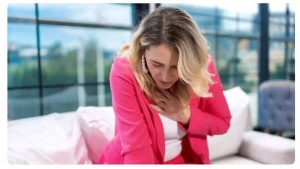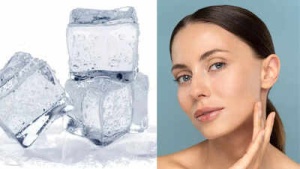There’s nothing worse than slipping on a new pair of shoes or spending time in the garden only to discover painful blisters a few hours later. A blister is a raised bubble on the skin that fills with fluid, usually caused by repeated friction or rubbing. They can also occur due to burns, allergies, or certain skin conditions. Although they can be uncomfortable, most blisters are not serious and will heal naturally within a week or two. Still, knowing how to care for them at home and when to seek medical help is important to avoid infection and discomfort.
Blister care made easy: How to heal them safely at home
Blisters may look uncomfortable, but they’re actually your skin’s natural way of protecting itself. The fluid-filled bubble cushions the damaged area, giving it time to repair underneath. In most cases, you don’t need medical help, just simple home care. Dermatologists warn against popping blisters, as it exposes raw skin and raises the risk of infection. Instead, gently wash the area, pat it dry, and cover it with a clean bandage. If a blister is especially painful and you need to drain it, use a sterilised needle at the edge, then apply petroleum jelly or ointment to speed up safe healing.
6 Natural remedies for soothing blisters
While petroleum jelly remains the gold standard for blister care, many people turn to natural remedies for extra comfort.
Some options may help soothe irritation, though research shows they aren’t always effective for healing the blister itself.
- Aloe vera: The gel from aloe vera leaves has cooling and soothing properties. According to a study published in ResearchGate, it may help reduce inflammation and keep the skin hydrated. Applying aloe before sealing the area with petroleum jelly can provide relief.
- Tea tree oil: Tea tree oil has antibacterial properties and is often used for acne and nail fungus. However, experts do not recommend it for blisters because it can sting or irritate broken skin.
- Chamomile: Chamomile is widely known as a calming herb and is sometimes applied topically. Limited research suggests it may help wounds heal slightly faster, but its benefits for blisters remain uncertain.
- Honey: Honey has antibacterial and anti-inflammatory qualities, making it useful in wound care in some settings. However, studies on blister healing are lacking. Petroleum jelly remains more reliable.
- Coconut oil: Animal studies suggest coconut oil may promote wound healing, but its effectiveness on human blisters hasn’t been proven. It can be used as a moisturiser but should not replace medical ointments.
- Vitamin E oil: Vitamin E has long been used in skincare for moisturising and scar reduction. While some people use it on wounds, research findings are mixed, and it may not work as well as thicker ointments.
Overall, natural remedies may provide temporary comfort, but they should not replace basic blister care with cleansing, covering, and petroleum jelly.
How to prevent blisters in the first place
The best way to deal with blisters is to stop them from forming. Ill-fitting shoes and sweaty socks are among the most common causes, especially during long walks, runs, or sports. You can lower your risk by:
- Wearing properly fitted shoes that aren’t too tight or too loose.
- Using moisture-wicking socks or gloves instead of cotton, which traps sweat and increases friction.
- Applying bandages or protective pads on areas prone to rubbing, such as heels or toes, before long activities.
- Stopping immediately if you notice redness or soreness on your skin.
These small preventive steps can save you from painful blisters later.
Infected blisters may require prescription creams, drainage, or further medical treatment. People with diabetes, poor circulation, or weakened immune systems should be especially cautious, as even small blisters can lead to serious infections.
Blisters may be painful and inconvenient, but most are harmless and heal with simple at-home care. The key is to avoid popping them unnecessarily, keep them clean and protected, and use petroleum jelly to create a healing environment. Natural remedies such as aloe or honey may soothe the skin, but they are not as effective as traditional treatments. With proper care and prevention, you can heal faster, reduce discomfort, and stop blisters from disrupting your daily activities.
Disclaimer: This article is for general informational purposes only and is not a substitute for professional medical advice, diagnosis, or treatment. Always seek the guidance of a qualified healthcare provider regarding any medical condition or lifestyle change.
Also Read: 6 early melanoma signs that reveal hidden skin cancer risks
 Daren Sammy Fined, Handed Demerit Point for Umpire Criticism After Test Match Comments
Daren Sammy Fined, Handed Demerit Point for Umpire Criticism After Test Match Comments
 Gavaskar Calls for Yadav's Inclusion, Questions Middle Order After India's Test Defeat
Gavaskar Calls for Yadav's Inclusion, Questions Middle Order After India's Test Defeat
 Decoding Your Health: Spotting 5 Prediabetes Warning Signs Before a Blood Test
Decoding Your Health: Spotting 5 Prediabetes Warning Signs Before a Blood Test
 X Corp. Cracks Down: Half a Million Indian Accounts Suspended for Policy Breaches
X Corp. Cracks Down: Half a Million Indian Accounts Suspended for Policy Breaches
 Headline:
Early Warning Signs: 5 Heart Attack Symptoms to Watch Out For Weeks in Advance
Headline:
Early Warning Signs: 5 Heart Attack Symptoms to Watch Out For Weeks in Advance
 Facial Icing: Benefits, Risks, and Safe Application of This Viral Beauty Trend
Facial Icing: Benefits, Risks, and Safe Application of This Viral Beauty Trend
 Chess Sensation Praggnanandhaa Joins Magnus Carlsen's Team Liquid for Esports World Cup
Chess Sensation Praggnanandhaa Joins Magnus Carlsen's Team Liquid for Esports World Cup
 Mastering JPG to PDF Conversion: A Graphic Designer's Guide to Quality and Efficiency
Mastering JPG to PDF Conversion: A Graphic Designer's Guide to Quality and Efficiency
 MI New York's Tajinder Dhillon Shines: From IPL Benchwarmer to MLC Star
MI New York's Tajinder Dhillon Shines: From IPL Benchwarmer to MLC Star
 Akmal Blasts PCB's Interim Coach Choice: Ex-Cricketer Questions Logic Behind Mahmood Appointment
Akmal Blasts PCB's Interim Coach Choice: Ex-Cricketer Questions Logic Behind Mahmood Appointment